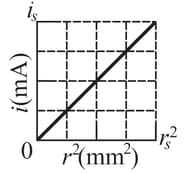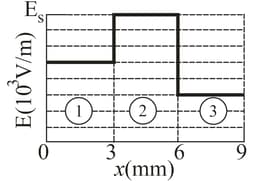A fuse in an electric circuit is a wire that is designed to melt, and thereby open the circuit, if the current exceeds a predetermined value. Suppose that the material to be used in a fuse melts when the current density rises to What radius of cylindrical wire should be used to make a fuse that will limit the current to

Important Questions on Current and Resistance
The (United States) National Electric Code, which sets maximum safe currents for insulated copper wires of various diameters, is given (in part) in the table. (a) Plot the safe current density as a function of diameter. Which wire gauge has the maximum safe current density? (Gauge is a way of identifying wire diameters, and .) (b) What is the current density (assumed to be uniform in -gauge wire for a current of
A certain cylindrical wire carries current. We draw a circle of radius around its central axis in figure (a) to determine the current within the circle. Figure (b) shows current as a function of . The vertical scale is set by and the horizontal scale is set by (a) Is the current density uniform? (b) If so, what is its magnitude? (c) What is the current between and


Figure (a) gives the magnitude of the electric fields that have been set up by a battery along a resistive rod of length (Fig.b). The vertical scale is set by The rod consists of three sections of the same material but with different radii. (The schematic diagram of Fig.(b) does not indicate the different radii.) The radius of section is . What is the radius of (a) section and (b) section


